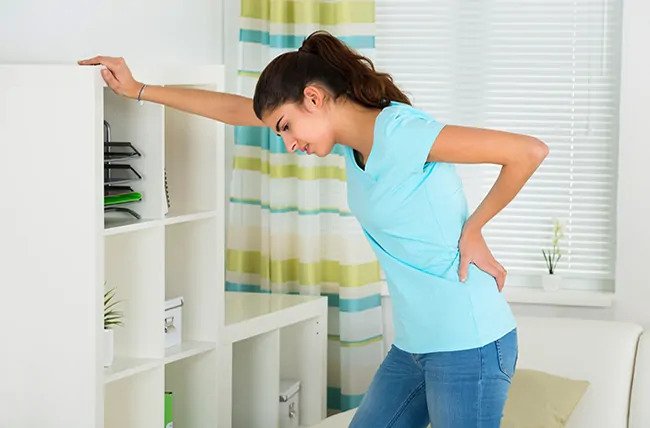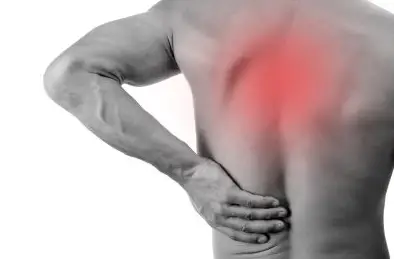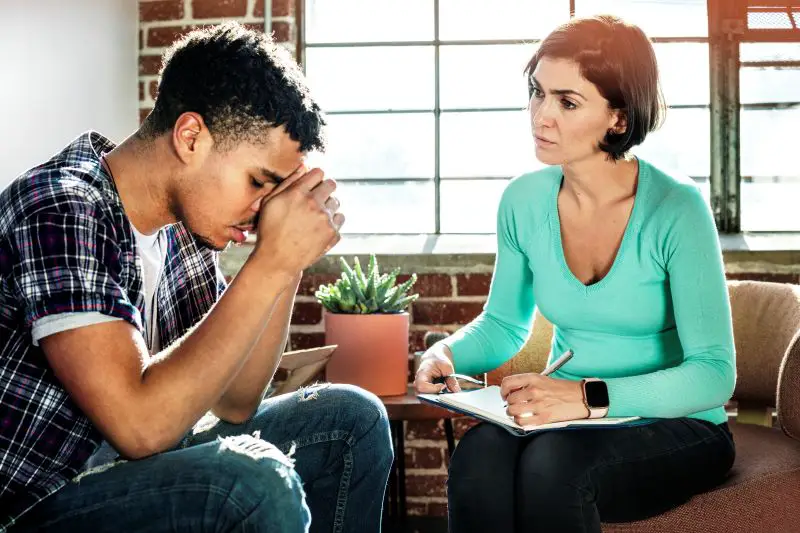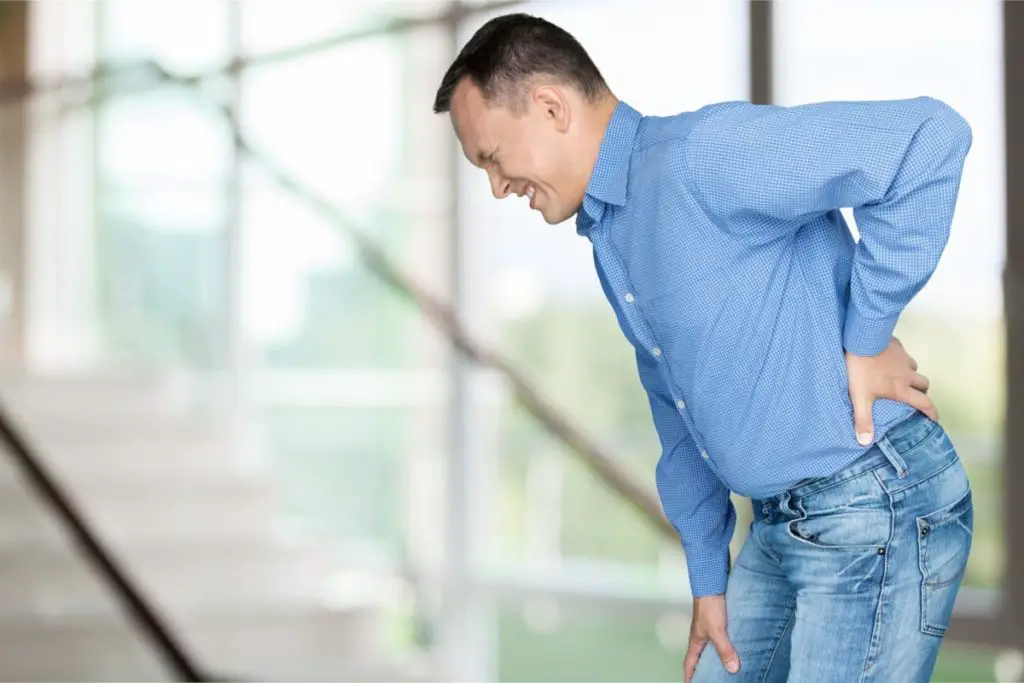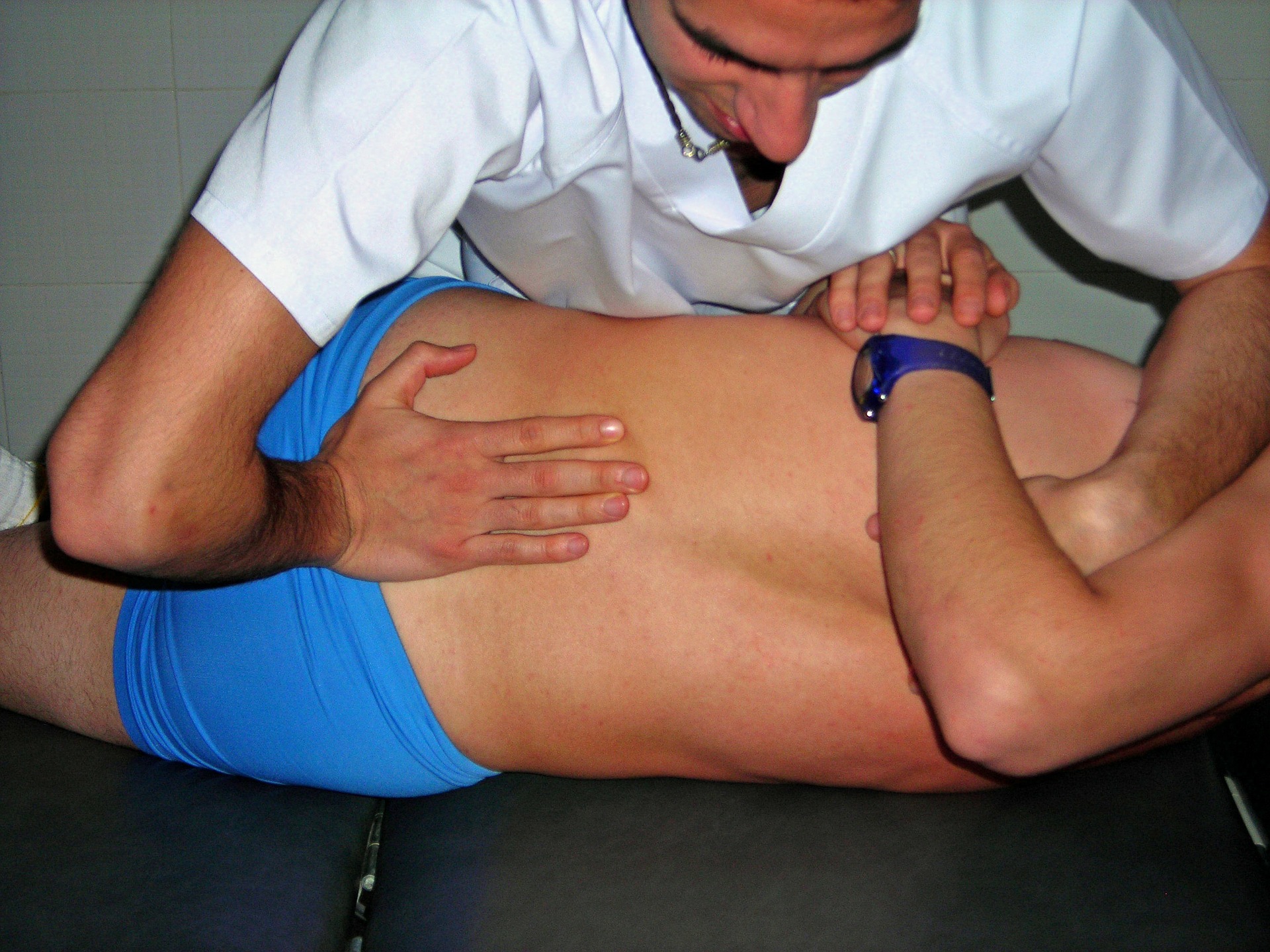You have back pain, and you're wondering what to do to heal it as quickly (and effectively!) as possible.
You've already been told to avoid rest, take medication, swim, see a specialist, and get an MRI. These tips are certainly useful, but you would like to know other strategies to treat your back pain, and benefit from a structured method to resume your activities.
In the following article, I show you what to do after back pain chronologically (that is, from the onset of symptoms until they disappear).
1. Make sure it's nothing serious
The goal here is not to scare you. But you should know that back pain sometimes stems from a serious injury.
Obviously, these are extremely rare attacks which represent a proportion minime cases of lumbago.
On the other hand, you must consult urgently if you ever experience one of the symptoms mentioned in the infographic below:
If you ever want to make sure that your back pain is not serious, I invite you to consult the following article:
Back pain: When should you worry? (Is it cancer?)
In addition to serious conditions, back pain can sometimes come from another condition such as fibromyalgia, ankylosing spondylitis or any other inflammatory low back pain for example.
Another element to mention is theirradiation of pain in the leg. In general, the more the pain radiates (for example towards the foot), the less favorable the prognosis is (especially if it is associated with numbness and tingling).
2. Avoid things that will make the pain worse
We have now eliminated the risk of a serious injury that would require urgent medical intervention. That's good, but the pain is still just as incapacitating and irritating!
Before taking any concrete action to reduce your back pain, you should avoid actions that could potentially make it worse! Indeed, several bad habits have the effect of delaying (or even completely preventing!) the healing of your low back pain.
The typical example: If the seated position aggravates your back pain, it will be necessary to find strategies to limit this position during the day (if you have a desk job, here are some tips to straighten your back).
I often suggest to my patients to get up regularly during the day to avoid immobilization caused by prolonged sitting position. In addition, there are seats like the'ActiveBase allowing dynamic sitting, and thereby improving your posture.
There are many other situations that make back pain worse, sometimes without you even realizing it. Here is a list of 8 deadly sins that must be corrected at all costs to optimize the health of your back. Are you guilty?
3. Control pain and inflammation
You suffer, and your pain prevents you from going about your daily business.
Fortunately, there are several ways to control pain and inflammation. On the other hand, most of the proposed strategies act in the short term, and do not constitute a lasting solution.
If you feel significant pain, try this:
- Apply ice to your lower back area for 15 minutes. Place a wet towel between the ice and your back to protect the skin. Repeat every 2 hours.
- After 24-48 hours of ice application, you can use a heated bag instead of cold. This will allow to act more on the muscular tensions in particular responsible for your back pain.
- Then determine whether it is the heat or the ice that gives you the most good, and use the modality of your choice. To learn more about the difference between hot and cold, see the following article.
- If the pain is too great, it will (unfortunately) be necessary to consider medication. Talk to your doctor to determine the right drugs, the right doses, etc.
- Some people hate medication, and prefer to opt for essential oils for their back pain. If this is your case, know that there are many natural products available on the market (the best known are covered in this article). However, your doctor should be informed if you opt for these options, simply because these products sometimes have side effects and interactions with certain pharmacological products.
- If you ever see a therapist (such as a physio or an osteo), he may use manual techniques such as mobilizations, massages and others aimed at relieving pain. machines like the TENS can also emit an electric current for analgesic purposes.
4. Reduce muscle tension
We mentioned that heat could reduce muscle tension, which is particularly responsible for back pain. Indeed, many patients feel relief from their symptoms after a massage, or even a hot shower. It is the same with manual techniques from a qualified therapist.
However, you should know that muscle tension is usually not the main cause of your back pain, but rather a consequence. It is in this perspective that the proposed solutions generally work in the short term only, and must be combined with a global (and active!) therapeutic approach.
Now, what can be done to reduce muscle tension, "untie" its knots and relieve its stiffness? Here are some strategies that can be practiced from the comfort of your own home.
- Take a tennis ball and place it on a stress point in the lower back. Lean your back against the wall so you can feel the pressure of the ball. Hold the position for a minute, then make mini-movements back and forth allowing the ball to massage your lower back.
- Breathing exercises like diaphragmatic breathing can also relax tight muscles. To find out more (and benefit from an exercise to do), see the following article.
- Believe it or not, meditation could also help you reduce muscle tension. Because it relaxes the mind and reduces stress, mindfulness (Mindfulness in English) is a very interesting strategy when you suffer from back pain. To learn more about this type of meditation (and benefit from exercises to integrate into your daily life), see the following article.
5. Minimize rest (yes, but how?)
You've probably heard of staying active after back pain. Easy to say, you might say. How to move when the majority of movements are painful?
The secret boils down to one key concept: The progressive overload. Essentially, you have to find movements (no matter how small) that are well tolerated, then progress them by adjusting the intensity and amplitudes.
Your body is stronger than you can imagine, and has an impressive capacity for resilience. The same movement may seem impossible one day, but become possible through repetition (all within a safe and progressive framework).
6. Adapt your bedding and optimize your sleep
The quality of your sleep is linked to back pain. Whether it is the pain that prevents you from sleeping well, or the lack of sleep that contributes to the pain, it is clear that sub-optimal sleep is harmful for your back.
There is not necessarily an ideal position for sleeping well. However, some positions are better tolerated than others. For example, if you usually sleep on your back, put a pillow under your knees (and even under the sheets to make sure it doesn't move during the night). Also use a proper pillow to protect your neck.
To know my opinion as a physiotherapist on the memory foam pillows, see the following article:
Shape memory pillow: Opinion of a health professional
If you're used to sleeping on your side, a pillow between your knees can also reduce spinal twists that potentially cause increased pain.
As for the prone position, it is often considered "bad" for the back. It's a myth. Admittedly, it forces the neck in rotation and accentuates the lumbar lordosis, but it's all about adaptation. If your spine is able to support this position, there is no harm in adopting this position.
On the other hand, in the presence of back pain or neck pain, a pillow under the belly is often better tolerated for people who are used to the prone position. It's up to you to see what's best for your back.
To benefit from advice allowing you to sleep like a baby despite your back pain, I invite you to see the following article.
7. Incorporate cardiovascular activity
It is often recommended to do cardio to stay in shape, and lose those extra pounds. Let me tell you that we underestimate the benefits of cardiovascular activity on back pain!
Among the benefits, we note a decrease in the sensitivity of the nerves (think of the sciatica and cruralgia!), improving the quality of sleep, optimizing the immune system, reducingchronic inflammation, mood enhancement, and so on!
Try to incorporate a "cardio" type activity into your routine. Brisk walking, swimming, cycling, any activity that helps to increase your heart rate without aggravating your low back pain can be practiced.
8. Identify a preferred direction
The concept of "preferential steering" is taken from the famous Mckenzie method.
Simply explained, there are usually specific movements and/or postures that aggravate back pain, and others that relieve it. The objective of the Mckenzie method is to identify a direction of movement that could relieve back pain, and provide exercises to incorporate into daily life.
Let's take a typical example: Marie has been suffering from back pain for several months. On MRI, he was diagnosed with disc herniation L5-S1. The sitting position is poorly tolerated, and any movement of flexion (leaning forward) increases lower back pain and causes radiation in the leg.
When assessed (by a Mckenzie therapist), it is observed that lumbar extension movements centralize symptoms. After several repetitions, the pain once in the calf resides only in the buttock.
It can therefore be concluded that the preferred direction is lumbar extension, and treatment should emphasize movements in this direction. Marie must therefore perform specific exercises regularly during her daily life in order to control the pain in the leg, and ultimately eliminate the pain.
For examples of exercises from the Mckenzie method, see the following article.
9. Become aware of psychological factors
Have you ever been told that back pain is in the head? Many take it as an insult, like being told your symptoms aren't real.
In fact, pain is a nerve message from the brain. So technically, yes, the pain is in the head (literally)! On the other hand, whoever tells you that your pain is not real is wrong.
That's a fact. Pain can be affected by factors other than physical. Have you ever felt your back tense after a stressful day at work? Or, being afraid to move for fear of hurting yourself more?
These psychological and social factors contribute to the overall picture, and underestimating them is a mistake that many people - and even specialists! - make.
Morality ? Do not attribute your symptoms solely to physical causes, and integrate strategies allowing you to improve your state of mind, mood, relaxation, etc.
Avoid thesocial isolation which could lead to depression and Chronic Pain. If you feel stressed, diaphragmatic breathing and mindfulness meditation are an excellent starting point. Also, consult a shrink if ever your morale is down.
10. Consult a therapist
A health professional is someone who has seen a lot of cases like yours, and who knows what to do to get you better. Why not enjoy it?
Often, the first instinct of people with back pain is to talk to their doctor. But there are several therapists and back specialists who will be able to help you if needed.
An expert will be able to issue (or clarify) your diagnostic, either via clinical tests or via examinations ofmedical imaging. And above all, he will be able to offer you individualized solutions to improve the health of your back.
To find out who (and when) to consult, refer to next article.
Bonus: Don't quit your good habits!
If you follow the advice mentioned above, there is a good chance that your symptoms will improve.
You will have understood by browsing the article that the reduction of pain requires an effort on your part. You have to be proactive, move, ask for help, work on yourself, define aims, etc.
Here is a problem that I often notice in my practice: Patients, as soon as the pain is under control, stop doing the activities that helped relieve their symptoms. They no longer take breaks after a long period of sitting. They let the stress of work affect their sleep. In short, they resume their bad habits.
Until the lower back pain comes back again!
Morality ? When your back pain is not incapacitating, this is the EXACT moment to maximize the treatment. Do your exercises and back stretches, improve your muscle strength and flexibility, correct bad postural habits, adopt good sleep hygiene, etc.
It's your turn!
Conclusion
The management of back pain is sometimes complex. Some treatments work for some, while they provide no benefit for others.
You have in this article a list of solutions to treat your back pain. The advantage is that they are listed in chronological order, which will give you some structure when it comes to treating your condition.
Remember that there are a multitude of treatments available. I also wrote an article that offers 36 ways to relieve back pain quickly (I promise you'll be surprised by strategy #26!).
The important thing is not to give up when a treatment does not provide the expected results. Keep fighting, surround yourself with the right people, and don't hesitate to ask for help.
Good recovery!

